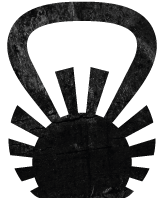The Science of Strength by Coach JKH.
Strength training is not just about lifting weights; it's a science-backed endeavor that’s all about maximizing human potential. From the foundational compound exercises like back squats, deadlifts, and Olympic weightlifting to the intricacies of intelligent programming and periodization, every aspect plays a crucial role in sculpting a stronger, more resilient body.
At the core of strength training lie compound exercises—movements that engage multiple muscle groups simultaneously. Squats, deadlifts, presses, and Olympic lifts are the heavy hitters in this domain, stimulating a cascade of muscular adaptations. Push, pull, squat, hinge, carry…these are the basic tenants of human movement. When executed with proper form and intensity, these exercises induce significant stress on the body, triggering adaptations such as increased muscle fiber recruitment, improved neuromuscular coordination, and enhanced bone density.
Compound movements have the unique ability to target large muscle groups, fostering systemic growth and strength gains. Back squats, for instance, not only build leg muscles but also engage the core, back, and stabilizing muscles, creating a solid foundation for overall strength development.
The journey to strength mastery is not a linear path. Plateaus in training are inevitable without intelligent program design that strategically varies intensity, volume, and rest periods to optimize gains while minimizing the risk of overtraining. Do not mistake random programming for “varied.” They are distinctly different concepts.
"A concept known as “wave periodization” involves cycling through phases of higher and lower intensity over designated time periods. This approach prevents the body from adapting to a single stimulus, thus continuously challenging muscles for growth. By strategically alternating between heavy lifting phases and recovery periods, wave periodization fosters steady progress without hitting major plateaus.
But even the strongest athletes need a moment to rest and recover. Enter the deload period—a crucial component often overlooked in training regimens. Deload weeks allow the body to recuperate from the accumulated stress of intense training, reducing the risk of injury and burnout. During these periods, training volume and intensity are scaled back, giving muscles the opportunity to repair and rebuild stronger.
In addition to deloads, incorporating lighter dynamic "speed" days and movements into training routines is essential for optimal strength gains. These sessions focus on explosiveness and power, training the nervous system to recruit muscle fibers more efficiently and increase the speed of motor neurons. By enhancing speed and coordination, dynamic workouts complement heavy lifting sessions, leading to well-rounded strength development.
No amount of training can compensate for poor recovery practices. Proper nutrition, hydration, and sleep play pivotal roles in optimizing recovery and maximizing strength gains. Adequate protein intake (1 gram per pound of bodyweight is a good target) supports muscle repair and growth, while carbohydrates replenish glycogen stores for sustained energy during workouts. Hydration is equally important, as even mild dehydration can impair performance and hinder recovery. And let's not forget the vital role that sleep plays. Quality restorative sleep is when the body undergoes essential repair processes, consolidates learning, and releases growth hormones crucial for muscle recovery and growth.
Strength training is something that demands both dedication and strategy. Big compound exercises like back squats, deadlifts, and Olympic lifts lay the foundation for strength gains, while intelligent programming and wave periodization ensure steady progress without hitting plateaus. Deload periods and dynamic speed days are vital for recovery and well-rounded development, while proper nutrition, hydration, and sleep optimize the body's ability to rebuild and grow stronger. By applying the science of strength, we unlock the potential to achieve our peak performance and become the strongest version of ourselves. If you train in a facility that seemingly has no plan or intended stimulus within particular training blocks, then perhaps it’s time you seek out professionals that are invested in your progress. 😉
Coach JKH CrossFit Rising Sun East Nashville.

